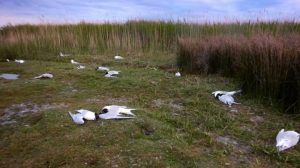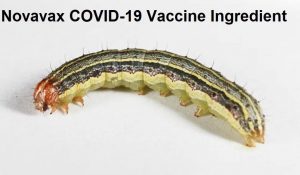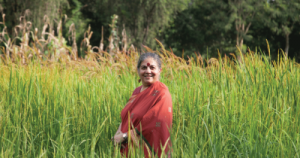
An eye-opening, must read article from Arthur Firstenberg, Author, The Invisible Rainbow: A History of Electricity and Life.
https://www.cellphonetaskforce.org/wp-content/uploads/2022/07/Birds-on-Texel-Island.pdf

Toms Blog on Life and Livingness

An eye-opening, must read article from Arthur Firstenberg, Author, The Invisible Rainbow: A History of Electricity and Life.
https://www.cellphonetaskforce.org/wp-content/uploads/2022/07/Birds-on-Texel-Island.pdf


And that’s before we consider the Matrix-M novel adjuvant it contains
by Dr. Meryl Nass
Meryl’s COVID Newsletter
You see, the vaccine’s spike protein is grown by genetically engineering baculoviruses to produce spike, and then infecting insect cells with the baculovirus to turn the whole thing into a spike protein factory.
At the CDC’s Advisory Committee on Immunization Practices meeting that I live-blogged last week, it was revealed that the Novavax vaccine was being rolled out because it could be marketed as a “more traditional” vaccine, since it was not made from mRNA. Novavax was to be directed to the unvaccinated, although only 10% of the unvaccinated, it was anticipated, would accept it.
The fact that no fetal cells were used in its development was claimed to be a marketing plus. However, thanks to a reader, it turns out that a human fetal cell line, (HEK) 293F, was used in the testing of the vaccine, as described in an article in Science.
NOTHING about this vaccine is traditional.
First, the Novavax company does not own a manufacturing plant, so the vaccine being distributed in the US is made at the Serum Institute of India.
Second, the adjuvant, Matrix-M (a nonspecific, potent immune stimulant) has never been used before. It is made from the Quillaja saponaria tree. There is another adjuvant that is only used in one (highly reactogenic) US vaccine, Shingrix, which is an extract from this tree. This GSK adjuvant, named ASO1B, contains QS-21, a single extract in the Shingrix vaccine.
The problem is that we don’t know what extracts from the tree are included in Matrix-M. The information is proprietary! The Matrix-M adjuvant uses two unspecified “fractions” from the Q. saponaria tree, and there exist no data on its safety. (Matrix-M does not contain QS-21, although the company sometimes implies it does, to distract from its novelty.) These two fractions, combined with phospholipids and cholesterol, form the 40 nanometer particles of Matrix M.
@kohzee_dad Cells within Plants Producing TOXiC PROTEiNS.

Were it not for the greed and compulsive lust for power of out-of-control corporations such as Bayer/Monsanto, Cargill, Amazon, Wal-Mart, and Nestle; trillion dollar investors like Black Rock and Vanguard; Big Pharma profiteers like Moderna and Pfizer, and would be global dictators like Bill Gates and Klaus Schwab, exploiting an engineered pandemic, fear-mongering, orchestrating a disastrous demolition of small business, farmers, and local/regional markets, there would be no food crisis, nor talk of a technocratic “Great Reset.”
https://www.organicconsumers.org/blog/oca-and-vandana-shiva-food-crisis


A great interview with the author of a book exploding the myths promoted by the merchants of chaos.
Whistleblower Richard Boyle is about to stand trial for telling the truth, facing 161 years in prison. Watch to learn more…